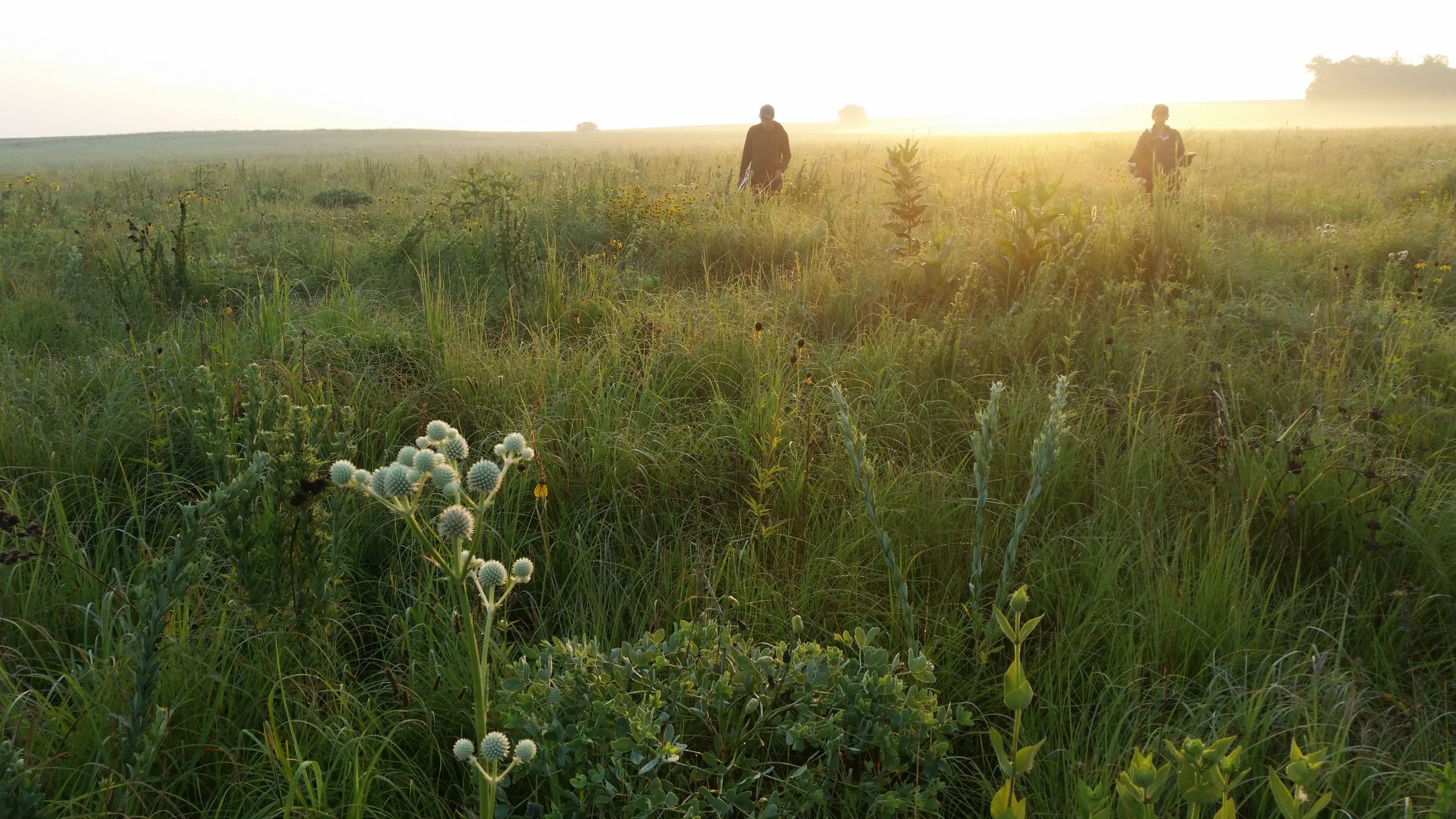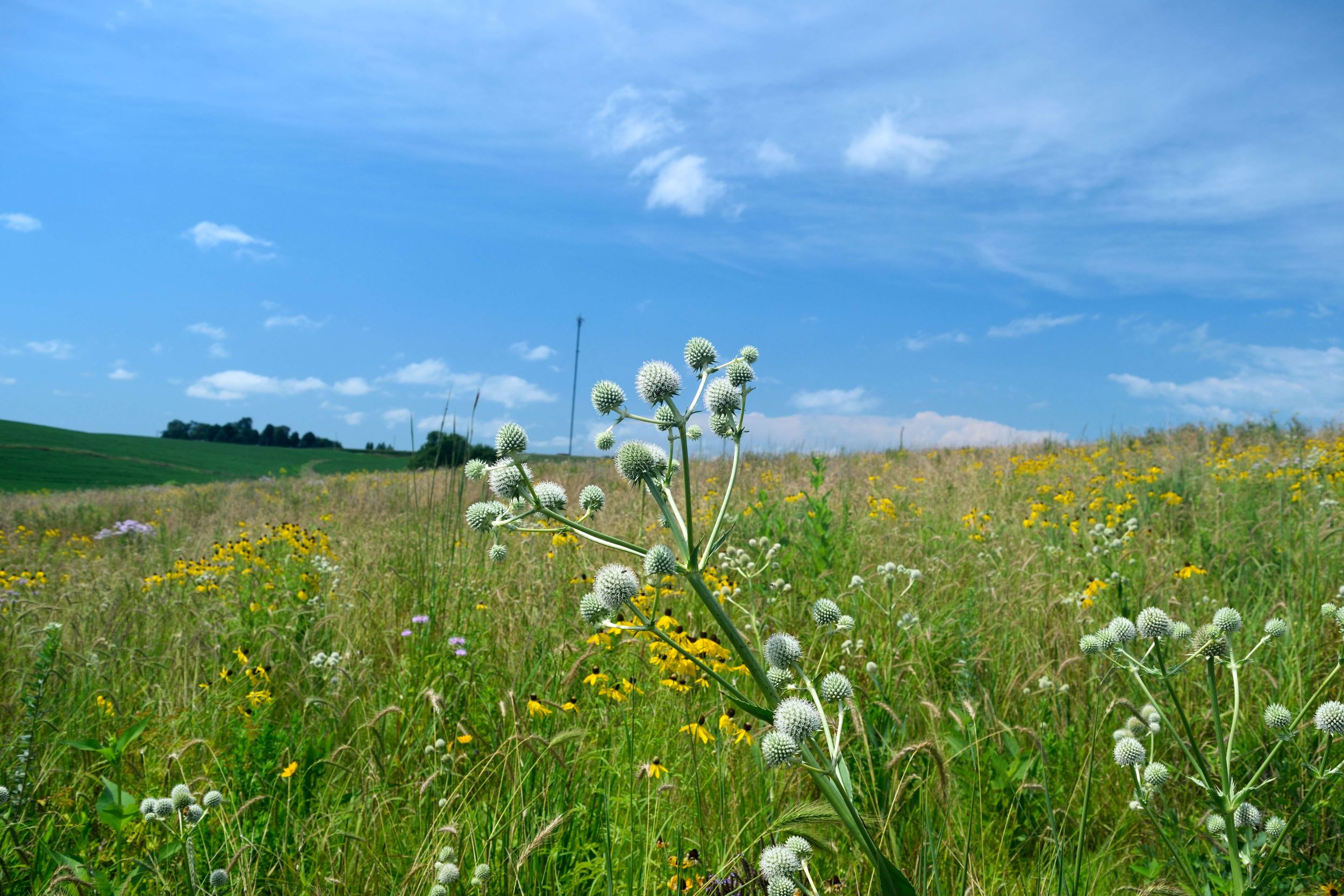STRIPS Landowner Report
By Rowan McMullen Cheng on May 6, 2019 in Blog

Photo by Matt Stephenson
Wild bergamot petals unfold in the chilly spring breeze while the Iowa State University STRIPS (Science-based Trials of Rowcrops Integrated with Prairie Strips) vertebrate wildlife research team prepares for another year of wildlife surveys on Iowa Natural Heritage Foundation’s Lanz Heritage Farm.
In 2010, Bobbie Lanz surprised INHF with a bequest of her 192-acre Jasper County farm. Since then, the farm has been dedicated to the common ground between agriculture and land conservation. Learn more about Lanz Heritage Farm.
Part of finding that common ground has included using the farm as a research site for the STRIPS program. INHF just received its 2018 STRIPS Landowner Report and the research suggests that the integration of prairie strips with rowcrops has a positive impact on wildlife and water quality.
“Sometimes people get caught up in the ‘either-or’ between land conservation and agriculture but there’s much more common ground than we think there,” said INHF Land Stewardship Director Ryan Schmidt.
The steepest and most vulnerable acres were planted into prairie to add water quality benefits and biological diversity while the remaining 143 acres continue to be farmed. Two of the three prairies provide natural borders along the farmland’s boundaries while the remaining prairie contains the vertebrate wildlife research team’s study plots.
“We pursued the Lanz Heritage Farm in our site portfolio since it seems to be a very high quality example of what a prairie strip can be,” says Matt Stephenson, one of the graduate research assistants. “It represents what the best-case example might be if someone has an erodible hillside or an interest in wildlife conservation.”
Over the past 4 years, the research team has conducted surveys for bird, reptile and small mammals on a multitude of farms and reconstructed prairies including Lanz Heritage Farm. The research will determine the relative densities of bird nests across Iowa and provide implications for what environmental factors are most likely to predict the presence of a particular species in that landscape.
“The most shocking thing to me was just the shear number of bird nests that were in these reconstructed prairies,” said Schmidt. “Lanz prairies are now a haven for grassland bird species.”
The STRIPS team found over 80 bird nests within the 23-acre prairie strip plot on Lanz Heritage Farm. They even found several Species of Greatest Conservation Need (SGCN) such as Meadowlarks, Dickcissels, Plains garter snakes and Western fox snakes. The prairie strip is now a dynamic oasis. Wildlife which once remained on the property edges and near the creek are now calling the prairie strip home. The introduction of a broader range of plant species increases the available habitat for the grassland wildlife and insects that depend on prairie ecosystems.
The gift of land is a permanent legacy for Bobbie Lanz, one that will continue to provide scientific innovations, soil and water health improvements and wildlife habitat while also promoting sustainable agriculture.

Photo by Ryan Schmidt